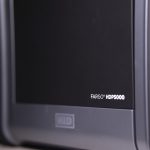If you’re health-conscious and always on the go, having a reliable personal blender can make all the difference in your daily routine. In the ever-growing market of compact blenders, two names frequently rise to the top: the BlendJet 2.0 and the Nutribullet. Both have gathered strong followings and offer distinct advantages, but which one is ultimately the better investment? This comparison breaks down their design, performance, portability, and overall value to help you decide.
Design and Build Quality
The first thing users notice is how these devices look and feel. The BlendJet 2.0 boasts a modern and colorful aesthetic with a cylindrical, bottle-style body and a built-in USB-C rechargeable battery. It’s designed specifically for portability and quick usage, and you can take it literally anywhere—from the gym to your desk.
On the other hand, the Nutribullet sticks to a more traditional blender shape, albeit in a compact form. It features a solid motor base with detachable blending cups. While sturdier, it does occupy more counter space and requires access to a power outlet for operation.
Verdict: If you’re looking for portability and style, the BlendJet 2.0 edges out Nutribullet. However, Nutribullet offers a more grounded and durable presence that may suit static kitchen setups better.
Performance and Power
When it comes to performance, the Nutribullet generally has the upper hand. Equipped with powerful motors ranging from 600 to 1200 watts (depending on the model), it can efficiently handle tougher ingredients like carrots, nuts, and ice. This makes it ideal for thicker smoothies, green juices, and even certain savory blends like sauces or dips.
BlendJet 2.0, designed more for convenience than heavy-duty blending, houses a smaller 5V motor with six stainless-steel blades. While it handles soft fruits, protein shakes, and powdered supplements excellently, it can struggle with fibrous veggies and large ice cubes.
Verdict: For blending power and versatility, Nutribullet is the clear winner. BlendJet 2.0 is more suitable for light to moderate use.
Portability and Convenience
This is where BlendJet 2.0 shines. Thanks to its built-in battery and USB-C port, you can charge it almost anywhere—using your laptop, car, or even a portable battery pack. A single full charge delivers up to 15 blends. Its lightweight design makes it extremely travel-friendly.
Nutribullet, in contrast, is tethered to your kitchen outlet. It’s more of a traditional appliance and lacks the mobile-friendly functionality that BlendJet offers.
Verdict: Portability is the realm of BlendJet 2.0. Anyone needing on-the-go convenience will find it highly suitable.
[ai-img]blendjet, nutribullet, personal blenders, kitchen gadgets[/ai-img]
Ease of Cleaning
Cleaning both devices is relatively straightforward but differs in method. The BlendJet 2.0 offers a self-cleaning feature: just add water, a drop of soap, and blend for a few seconds. No disassembly needed, making it perfect for busy days or travel.
Nutribullet requires disassembly of the cup and blade assembly for cleaning. It’s also dishwasher safe, at least for certain parts, but involves more steps overall. However, the assembly is easy once you get used to it.
Verdict: BlendJet 2.0 offers slightly more convenience thanks to its self-cleaning capability, especially appealing for users in a hurry.
Price and Value
Pricing varies depending on the specific models and additional accessories. As of recent listings, BlendJet 2.0 costs approximately $50, while Nutribullet models start around $60 and can go up to $120 or more. While Nutribullet offers greater power, BlendJet delivers in convenience and mobility.
Verdict: For budget-conscious users who prioritize flexibility and light usage, BlendJet 2.0 is a better fit. However, those seeking quality blends and long-term use might find greater value in a Nutribullet.
[ai-img]product comparison, blender options, smoothie preparation[/ai-img]
Final Verdict
The choice between BlendJet 2.0 and Nutribullet ultimately comes down to lifestyle and intended usage.
- Choose BlendJet 2.0 if you want a highly portable, stylish, and easy-to-use mini blender for soft smoothies, workout shakes, and light blending needs.
- Opt for Nutribullet if you prioritize power, versatility, and the ability to blend tougher ingredients regularly in a home setting.
Both devices have carved out their niches successfully, and neither is universally better than the other. Assessing your personal needs will help determine which of these two compact giants belongs on your kitchen shelf—or in your gym bag.








